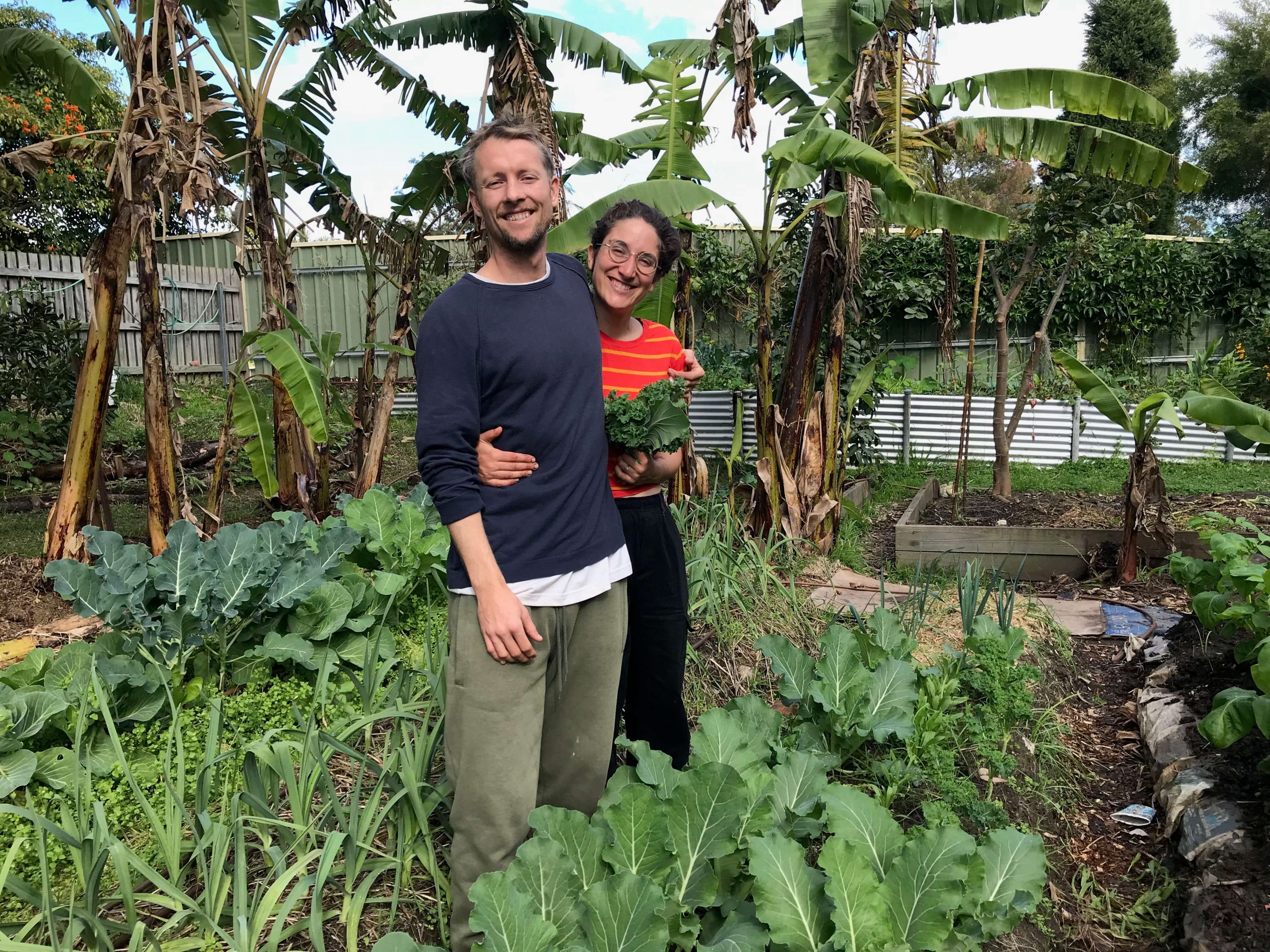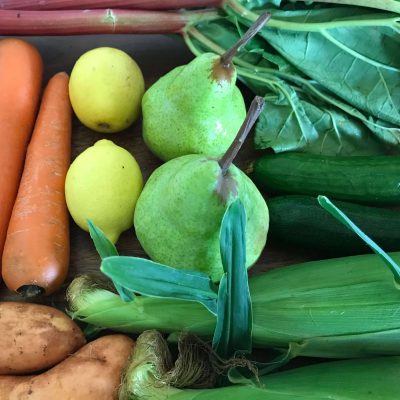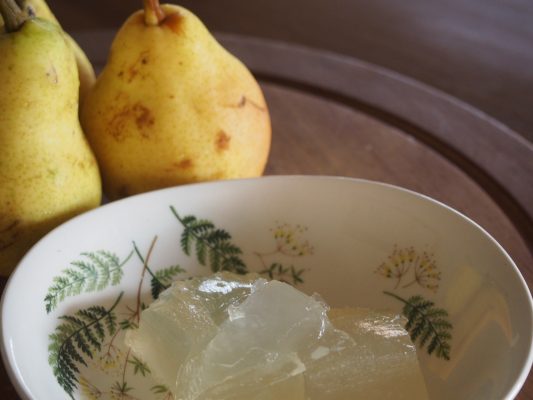Care, Community, Plant & Grow
Dean and Honey Love Hot Composting
This is a guest post article, written by local permaculture advocates Dean and Honey from Dean and Honey’s Permaculture Events, Belmont North NSW.
We love Composting! Well, Dean loves composting, and Honey will do it because she loves healthy, nutrient-dense veggies resulting from it. Dean says it’s in his bones. He can remember being a child and always thinking about closing his energy loops and not creating any waste.
Maybe it’s in all of our bones. When did food waste become a thing?
Only a few thousand years ago, we were a part of the forest, an inherent functional piece in a sea of complex relationships. We ate from the forest, our scraps went on the ground, along with our excrement, which fed the plants that gave us the food, and the great cycle would go again.
Today things are a little different. We are more disconnected from the natural cycles, but this doesn’t mean we can’t reconnect now and be regenerative players in this game of life.
It Starts with Composting
At Dean and Honey’s Permaculture Events, we support regenerative living by growing food locally in our backyard. Permaculture is a system for ecological and sustainable living. One of the most important permaculture approaches is to mimic the patterns and relationships found in nature and apply this to our human habitation.
Composting is an amazing place to start reconnecting with the natural systems. We all eat food. We all generate food waste.
Composting happens by microbes. The tiniest of these microbes are bacteria, and there is a whole spectrum of life that takes part in the composting process. We akin the life of the soil to the life of the sea. You have plankton, and you have whales and everything in between. There are more microbes in a teaspoon of healthy soil than humans on earth!
Understanding Composting
One important key – maybe the most essential key – to think about with composting is that organic matter falls into two category’s – Carbon and Nitrogen.
Carbon Category
The carbon category includes things like dead leaves, hay, straw, dead grass clippings and cardboard.
Nitrogen Category
Vegetable scraps, manures, green or fresh leaves, green/fresh grass clippings and coffee grounds fall into the nitrogen category.
So, like the forest floor, we want a balance of these two types of organic matter when composting.
Let’s return to the forest floor. Leaves and branches are falling from trees (carbon), animals are pooing (nitrogen), the grass is falling over and dying (nitrogen). They are gently piling up on each other and moistened by the rain. This mix of naturally occurring carbon and nitrogen is how the life of the soil, sometimes referred to as the ‘Soil Food Web’, has evolved over millennia to thrive.
Our Favourite Way to Compost
So how do you compost? There are a few different ways to compost, yet our favourite technique is hot composting. If you want a continual supply of compost, this is the way to go.
Hot composting is the fastest way to turn vegetable and organic matter into soil. It does require a little bit of planning and quite a lot of manual labour. Start hot composting, and you won’t need to renew your monthly gym membership!
Hot composting is more or less the same as cold composting, with a few extra twists and turns. Yes turns! Instead of slowly adding organic matter to your hot compost, we add all the ingredients at the start. Then nothing more.
Not adding anything else is where home composters can find it a bit tricky. Our hands-on workshops make the process of hot composting much clearer.
Hot Composting is like Baking a Cake
We collect our household vegetable waste into a large garbage bin or container with a sealed lid to deter animals or insects from getting into it. We also stockpile our lawn clippings and any garden waste.
When we have enough of a balance of carbonaceous and nitrogenous materials to make a metre x metre pile, we go for it. It’s like baking a cake.
We need the right materials with the right amount of moisture to get the compost “cake mix” well balanced. It’s really simple and something that you get better and better at. Of course, having two metre by metre free forms makes this a lot easier.
We start with a 15cm-20cm layer of carbon or nitrogen inside our free form and wet it out. The perfect moisture content is when we pick up a handful of organic matter and squeeze it; a few drops drip through our fingers.
Our next layer is the opposite material we started with, wetting it out and repeating, alternating the layers.
That’s Day 1 of composting.
On every third day from here, we transfer our compost back and forth between the two free forms until we’ve flipped, turned and forked it five times. Once it’s been flipped five times, we let it sit for 4 -5 days before it’s ready to go into the garden.
The process is deep, but what we’re doing by mixing the compost is creating the perfect environment for the soil food web to have a wild party.
Sex, food, natural chemicals, dancing! All this partying is hot work and generates heat generated by the friction from their movements in the pile. During this grande fiesta, the microbes use up all the oxygen and almost suffocate themselves. By flipping it every three days, we re-oxygenate the pile, allowing the composting party to go for another round.
Soil is the Foundation of Life
Composting is a whole, complex universe under our feet. Absolutely fascinating!
We think the more that humans understand the life of the soil and our absolute and utter dependence on it, the more we will care for it.
Soil is the foundation of life; it really is black gold. Of course, you can’t eat gold, but you can be ultra-healthy by eating nutrient life-teeming food and living in a thriving, resilient ecosystem.
About the Author
Dean and Honey’s Permaculture Events
Dean and Honey’s Permaculture Events is a place where people come together to share inspiring earth regenerative ideas & skills.
Our permaculture-related workshops & open days will upskill and empower anyone who wants to take the future of the planet into their own hands. We are a showcase of what permaculture, regenerative living & resilience in the suburbs can look like.
Find Out More…
Related stories from ReNewy Living:
- Discover how our local food organics and garden organics bin collection service is useful when we don’t have the ability to home compost
- Growing your own veggies is one way to “shop” from your backyard.
- Here are other food and gardening ideas for living sustainably
Related External Links…
The following links support this story:
- Check out Dean and Honey’s Permaculture on instagram for all their latest events and information
- Learn more about the concept and thinking of permaculture principles
The following links are affiliate links. At no additional cost to you, I may receive a commission if you choose to make a purchase from these Australian businesses.
- A subscription to the modern Australian permaculture PIP magazine here or buy a single copy here.
- Products and ideas to get help you start with home composting
- Gardening tools and accessories
- A print or digital subscription to the ABC Organic Gardener magazine

Articles and Stories
Inspiring stories about people & planet helping you live locally & sustainably everyday.
















